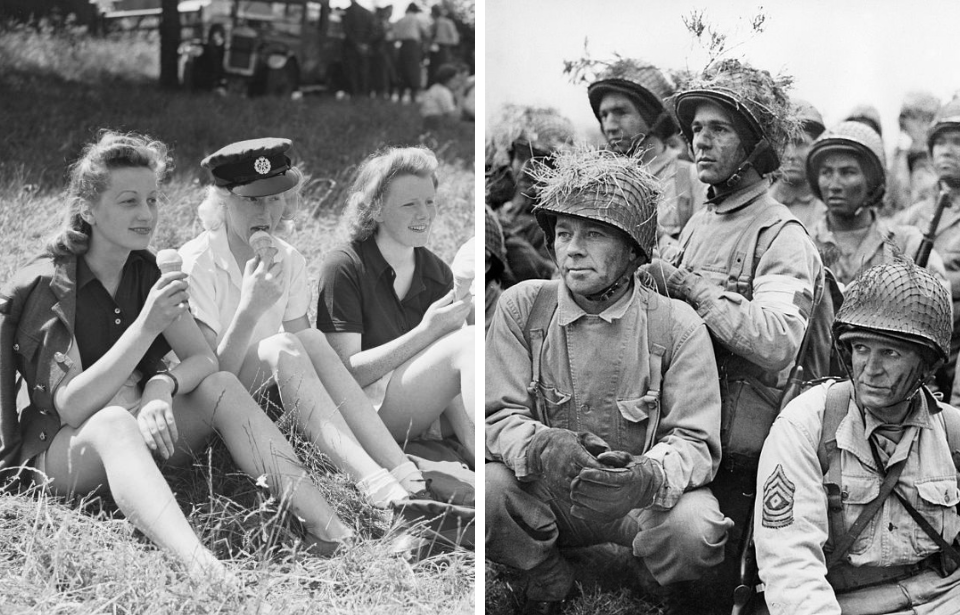On June 6, 1944, 600 men squeezed into 32 transport planes en route to the Merville Gun Battery in Normandy. Known as the “Red Devils”, the 9th Parachute Battalion leaped from the aircraft at 12:50 AM. The battalion’s leader, Lt. Col. Terence Otway, was waiting at the drop zone, but as fewer and fewer men arrived, he knew something was wrong.
The Battle for Merville Battery
Otway and his 9th Battalion were charged with destroying the German artillery established at the Merville Battery that threatened the success of the D-Day landing at Sword Beach, eight miles away.
The Battery was composed of a network of concrete bunkers that made air or sea attacks next to impossible, forcing the British to defeat the Germans on the ground. The Battery was protected by barbed wire fencing, minefields, a ten-foot-deep anti-tank ditch, and checkpoints fitted with heavy artillery weapons.
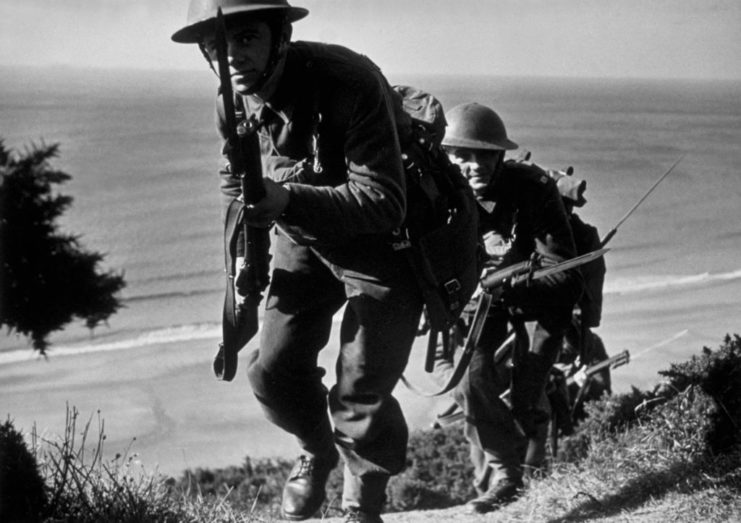
The 9th Battalion was also surprised to find deep ditches filled with water, creating a moat between the Battery and the fields where paratroopers landed. The fields themselves were also flooded with water, making it difficult for soldiers to cross and reach the meeting point. Both the ditches and flooding were not picked up by aerial reconnaissance patrols.
Otway and his men knew that the ensuing battle could end in a blood bath, especially after only 150 men arrived at the designated checkpoint. The other 450 landed so far from the drop zone that they could never make it in time to attack Merville. Quickly changing the plan of attack, Otway ordered two holes be cut in the wire surrounding the German encampment. At 4:00 AM, 150 men streamed into the Merville Gun Battery to fight 130 Germans.
The Women’s Auxiliary Air Force served as a temptation
The secrecy surrounding D-Day, and the other initiatives surrounding the Normandy invasion, such as the assault on Merville, were vital to the success of the operation. Worried his men would be easily swayed into divulging key information to undercover German soldiers, Otway used one of the oldest tricks in the book to test them: sending in women.
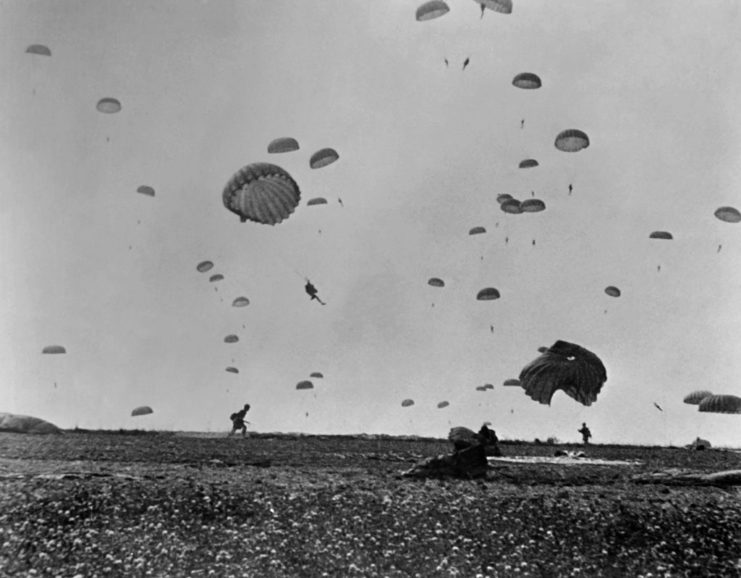
In D-Day: Minute By Minute, author Jonathan Mayo claims Otway vetted 30 of the most beautiful women from the Women’s Auxiliary Air Force and told them to dress in plainclothes and hit on his men at local pubs, to see who would spill their secrets. To his surprise, none gave away the secret details of their mission; the attack on Merville could go on as planned.
Against all odds
The 9th Parachute Battalion suffered over 70 casualties under heavy artillery from the Germans, but they continued to take out German machine gun nests scattered throughout the battery. The men used their Gammon bombs to destroy the artillery in the Battery. They were surprised to find the Germans had been operating outdated 100mm Czech guns, not the 150mm guns that intelligence has described.
After one hour of intense fighting, things died down, and Otway ordered wounded men to be moved to a nearby monument known as Calvary’s Cross.
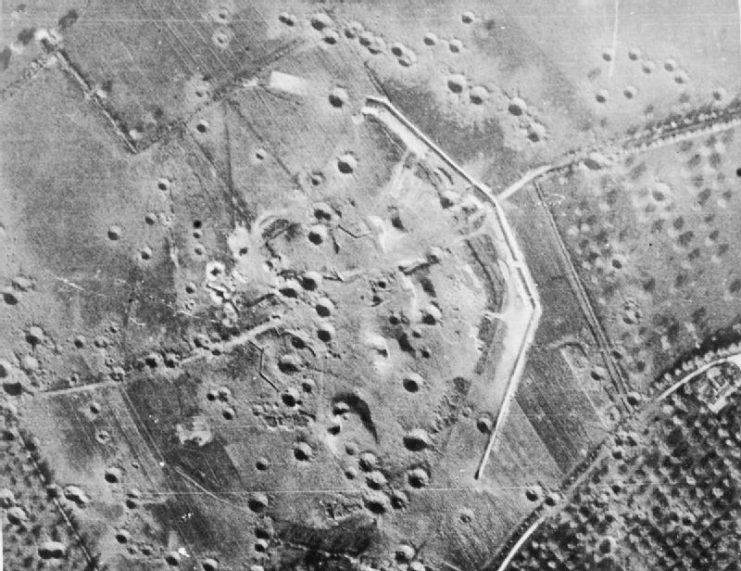
Now that the fighting at Merville was over, Otway gave orders for the remaining 75 troops to head to the village of La Plein, the site of a German garrison. Unfortunately, the paratroopers only took half of the village, since they had lost so many at Merville. They had no choice but to wait until reinforcements could complete the job.
Thanks to the dedication of Lt. Col. Otway and his battalion, the mission stayed secretive and was ultimately successful.
Lt. Col. Terence Otway’s legacy
Only two days after Merville, a stray shell gave Otway a severe concussion. He was evacuated to hospital and graded unfit to continue his active service. Instead, he was posted as an officer at the War Office. For his leadership at Merville, he was awarded the Distinguished Service Order.
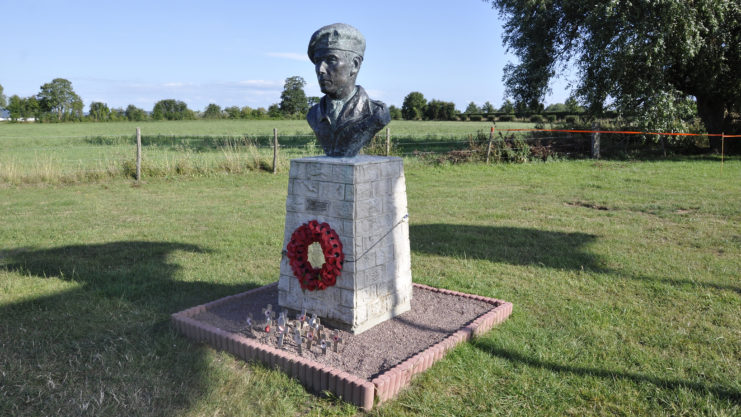
Today, the Merville Battery is a museum that shares the history of D-Day beyond the beaches of Normandy. The site includes the renovated Douglas C-47 Skytrain that was used to drop paratroopers in the 9th Parachute Battalion on the morning of June 6, 1944. Otway’s selfless dedication to his battalion is also commemorated at the museum.
More from us: The US Military Dropped Pianos Onto the Battlefield with Parachutes During WWII
A statue depicting Otway was unveiled at the former Merville Battery site in 1997. He died in 2006 at the age of 92. Since then, Otway’s family has donated his medals and awards to the museum, so that his legacy may live on.
